This article was medically reviewed by Jonas DeMuro, MD. Dr. DeMuro is a board certified Pediatric Critical Care Surgeon in New York. He received his MD from Stony Brook University School of Medicine in 1996. He completed his fellowship in Surgical Critical Care at North Shore-Long Island Jewish Health System and was a previous American College of Surgeons (ACS) Fellow.
There are 7 references cited in this article, which can be found at the bottom of the page.
wikiHow marks an article as reader-approved once it receives enough positive feedback. In this case, 85% of readers who voted found the article helpful, earning it our reader-approved status.
This article has been viewed 105,823 times.
Experts say you can usually go back to your regular routine soon after thyroid surgery, but it's important to take care of your incision and to refrain from vigorous activities.[1] You'll likely have stitches to hold your incision closed for about a week and a half after surgery, and you'll need to keep them as dry as possible. Fortunately, research shows that it's rare to get an infection in your incision, so you likely don't need to worry if you're following your doctor's instructions.[2] With good self care, your incision will likely heal properly and you can reduce the risk of noticeable scarring.
Steps
Keeping the Incision Clean
-
1Keep the wound clean and dry. One of the most important things to do after you have had thyroid surgery is to keep the wound clean and dry. Follow your doctor’s instructions for wound care and bathing following your surgery. Doing so may help prevent your wound from becoming infected and it may also help the wound to heal faster.[3]
- Do not immerse the wound in water until it is fully healed. For example, do not go swimming or submerge the wound while taking a bath.
- Immediately following surgery, you may have a small drain tube exiting the skin of the neck near the thyroid incision site; it will help keep fluid from building up in your neck, fluid that could lead to infection and additional pain. Your doctor should remove the drain tube prior to your discharge from the hospital once any drainage is clear and sparse.
-
2Cleanse the incision area the day after surgery. The morning after your surgery, you can take a shower and allow water and mild soap to run over your wound. Do not scrub the wound or put pressure on it with high pressure water or your fingers. Just allow some water to run over the incision site and cleanse it.[4]Advertisement
-
3Change your bandage as needed. Your doctor may instruct you to keep the wound covered with some light gauze held on with tape. In this case, you may need to change your bandage once per day to keep the wound clean.[5]
- Be gentle when you remove the old gauze as it may stick to your skin. If it is stuck, use about a teaspoon of hydrogen peroxide or saline to moisten the gauze and make it easier to remove the bandage. Then use some cotton balls dipped in hydrogen peroxide or saline to gently clean away any dried blood on your skin before replacing the bandage.[6]
-
4Watch for signs of infection. Surgical site infection in thyroid surgery is very rare as it is considered a “clean case,” with minimal chances of contamination.[7] However, it is important to observe the wound after surgery for signs of infection and talk to your doctor right away if you notice any of these signs. Signs that a wound may be infected include:
- Redness, warmth or swelling at the site.
- Fever greater than 100.5°F (38°C)
- Drainage or opening of the wound
Supporting the Healing Process
-
1
-
2Follow your doctor’s guidelines for food and fluid intake. Good nutrition and adequate hydration are important ways to support your body’s healing process. You may need to follow a special liquid or soft foods diet after your surgery and then stick to your doctor’s recommendations thereafter.[9]
- A liquid diet includes juices, broth, water, decaffeinated tea, and ice.
- A soft foods diet includes items such as pudding, jello, mashed potatoes, applesauce, room temperature soups or broths, and yogurt.
- You should be able to move to solid foods as tolerated after a few days. As you recover from surgery, you will have some pain when you swallow, so it is a good idea to take pain medications about 30 minutes prior to your meals.[10]
-
3Wear sunscreen outdoors after your wound has healed all the way. Use a high SPF sunscreen, such as SPF 30, or keep your scar covered a scarf for an entire year. Using these measures to protect your scar from the sun will provide the best cosmetic outcome for your neck wound.[11]
- Make sure that your wound is fully healed before applying sunscreen on it. This should take about two to three weeks.
Dealing with Pain
-
1Take painkillers as directed by your doctor. Most patients will receive narcotic pain medications after surgery. Follow your doctor’s instructions for how to use these medications and do not exceed the recommended dosage.[12]
- Keep in mind that prescription pain medications can cause constipation so it is important to drink eight to 10 glasses of water per day and eat foods that contain fiber. You may also want to take a mild stool softener to deal with constipation.
- Do not take acetaminophen while you are on prescription pain medication or you may cause damage to your liver. Avoid taking nonsteroidal anti-inflammatory medications as well to avoid potential bleeding issues.
-
2Use a cool compress to help reduce pain. Cool compresses such as a bag of ice or frozen peas wrapped in a towel may be applied to wound for 10 – 15 minutes to help with pain. You can do this once every hour. Make sure that you wrap the compress in a towel or a t-shirt to avoid frostbite.[13]
-
3Limit your neck movement after surgery. It is important to limit your neck movement for one to three weeks after your thyroid surgery. Stick to non-strenuous activities and doctor-approved neck exercises and avoid anything that might put pressure on your neck.[14]
- Studies have shown that certain neck exercises decreased common complaints experienced by most patients, such as a feeling of neck pressure and a choking sensation. Studies have shown that patients who performed these neck exercises also had a decrease in their need for pain medications. Ask your doctor about neck exercises that involve flexion and hyperextension of the neck. With your doctor’s approval, you can perform these exercises three times a day, starting on the first post-operative day.[15]
- Avoid any strenuous activities for the first week following surgery, this involves lifting greater than 5 lbs., swimming, running or jogging. Ask for your surgeon’s permission before resuming your normal activities.
-
4Notify your doctor right away if you experience complications. There are some potentially serious complications that you should watch for as you recover from thyroid surgery. If you experience any of these complications, notify your doctor right away. These complications include:[16]
- A weak voice
- Numbness or tingling
- Chest pain
- Excessive coughing
- Inability to eat or swallow
Warnings
- Talk to your doctor right away if you experience any pain or discomfort that are not helped by medications and other measures.⧼thumbs_response⧽
References
- ↑ https://www.mayoclinic.org/tests-procedures/thyroidectomy/about/pac-20385195
- ↑ https://www.hopkinsmedicine.org/surgery/specialty-areas/surgical-oncology/endocrine/patient_information/thyroid_surgery.html
- ↑ https://www.nlm.nih.gov/medlineplus/ency/patientinstructions/000293.htm
- ↑ https://www.nlm.nih.gov/medlineplus/ency/patientinstructions/000293.htm
- ↑ https://www.nlm.nih.gov/medlineplus/ency/patientinstructions/000293.htm
- ↑ http://www.ncbi.nlm.nih.gov/pubmed/24056141
- ↑ https://myhealth.alberta.ca/Health/aftercareinformation/pages/conditions.aspx?hwid=zc2552
- ↑ http://www.ncbi.nlm.nih.gov/pmc/articles/PMC3724005/
- ↑ https://www.nlm.nih.gov/medlineplus/ency/patientinstructions/000293.htm
- ↑ https://www.nlm.nih.gov/medlineplus/ency/patientinstructions/000293.htm
- ↑ https://www.nlm.nih.gov/medlineplus/ency/patientinstructions/000293.htm
- ↑ https://www.nlm.nih.gov/medlineplus/ency/patientinstructions/000293.htm
- ↑ https://www.nlm.nih.gov/medlineplus/ency/patientinstructions/000293.htm
- ↑ http://www.ncbi.nlm.nih.gov/pmc/articles/PMC3724005/
- ↑ http://www.ncbi.nlm.nih.gov/pubmed/16078129
- ↑ https://www.nlm.nih.gov/medlineplus/ency/patientinstructions/000293.htm
About This Article
To take care of an incision after your thyroid surgery, clean it the day after surgery by taking a shower and allowing water and mild soap to run over the wound. Make sure to avoid scrubbing the area or putting any pressure on it, as this could reopen the site. After you clean the area, follow your doctor's instructions on wound care, which may include keeping it covered and changing the bandages daily. If you seen any signs of infection, such as swelling, drainage, or redness at the site, call your doctor immediately. For more tips from our Medical co-author, including how to deal with pain after thyroid surgery, keep reading!
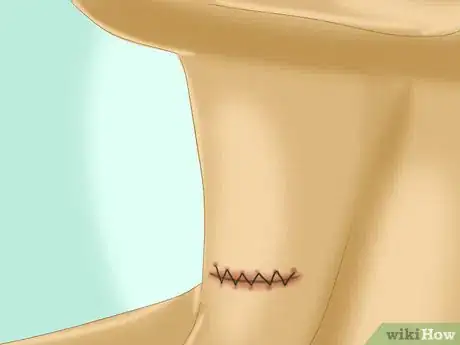
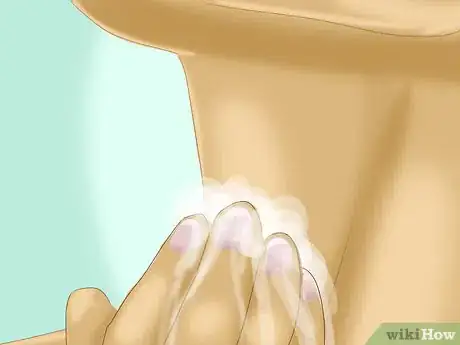
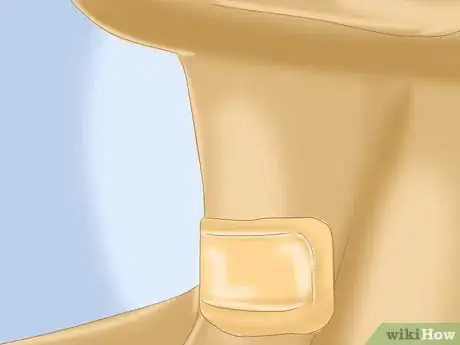
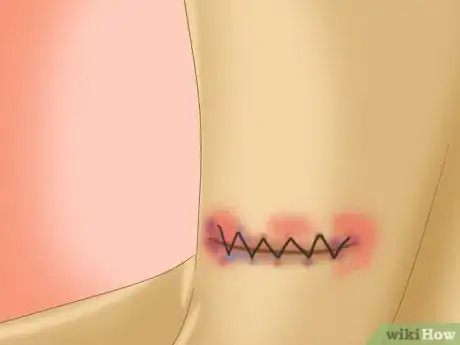
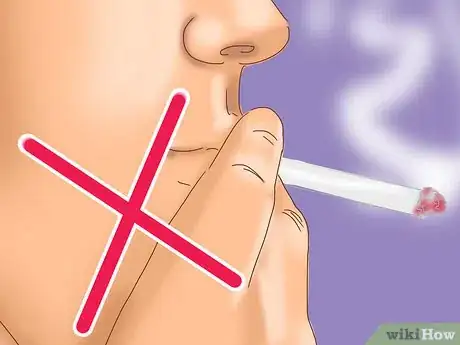


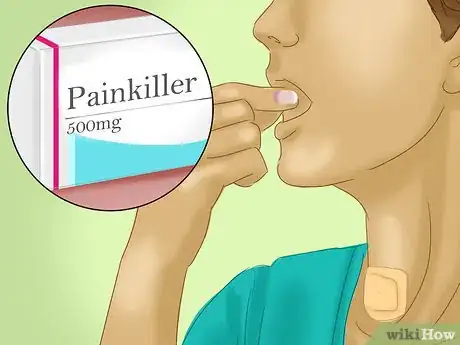

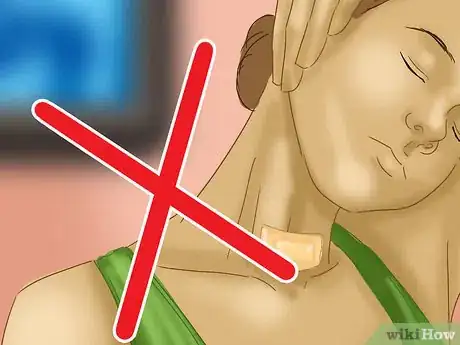
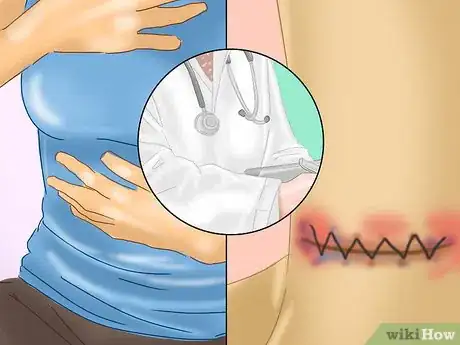



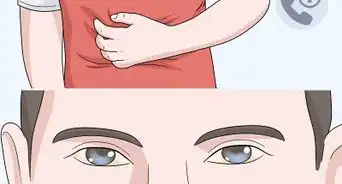
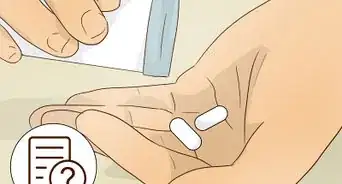




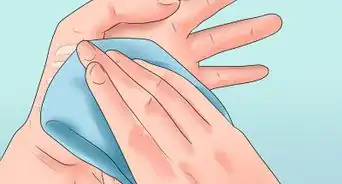



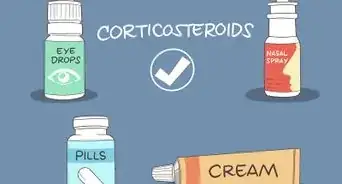

















































Medical Disclaimer
The content of this article is not intended to be a substitute for professional medical advice, examination, diagnosis, or treatment. You should always contact your doctor or other qualified healthcare professional before starting, changing, or stopping any kind of health treatment.
Read More...